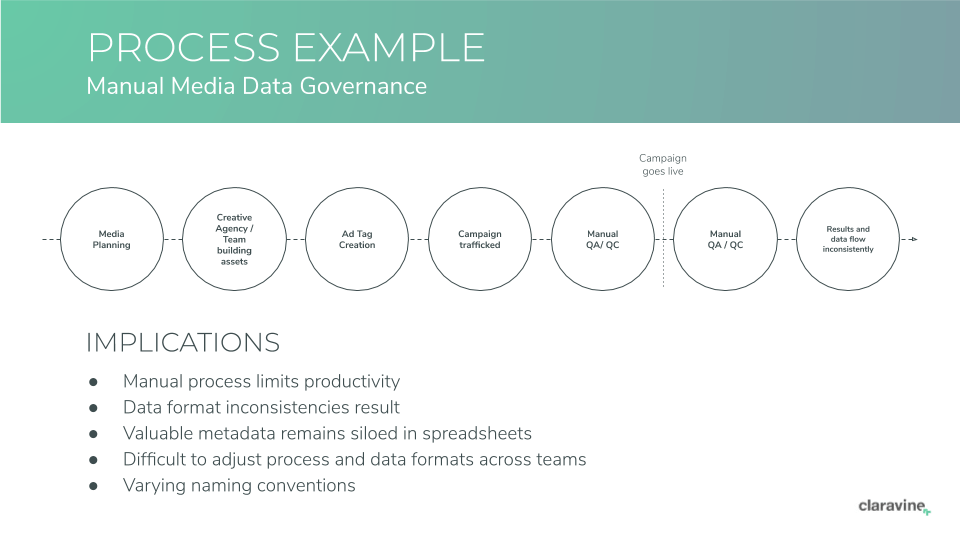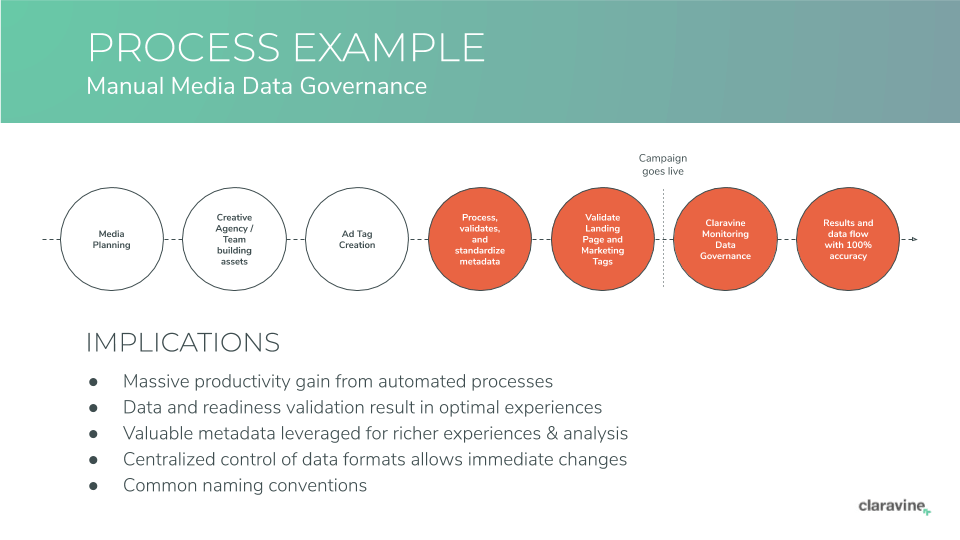Collaborative Marketing Data Management

Never has it been more important for marketing organizations to align on their data – it’s overly abundant and often, unruly. Many teams are scrambling to clean and make sense of it all. Many more complain and know there’s a better way but still are finding it a difficult problem to solve. Consider some approaches below to collaborative marketing data management:
What is collaborative marketing data management?
It is a company’s effort to get independent marketing teams focused on creating clean, quality data. This is different than digital marketing campaign execution which has its own workflows and project management systems. We are primarily talking about alignment on all of the data definitions and field values digital marketing requires under the hood of a company’s digital marketing assets.
Who needs it and why?
A slew of internal and external teams (like agencies) are usually responsible for running interdependent digital campaigns that also include creating respective assets like multimedia content, landing pages, product listings, coupons, and other related marketing elements.
Each of these marketing assets has corresponding and comprehensive metadata associated with it for downstream use. Example uses for this metadata include segmentation of audiences, enriching different digital analytics platforms, the personalization of experiences, and other optimizations.
These disparate teams who work on different campaign components currently use some archaic ways of managing the data creation process, e.g. trafficking sheets, article metadata, and product creation. Some still use spreadsheets that aren’t easily collaborated on especially when teams are more remote than ever.
The depth of teams and breadth of metadata some organizations require is substantial. In fact, one of our customers has 21 different teams (internal and agencies) running paid advertising with more than 70 metadata fields used within a given campaign. This doesn’t even account for the metadata attached to the respective products the campaign is promoting nor the landing pages and respective digital assets (e.g. videos, images).

Without this collaboration around metadata:
- Your customer experiences suffer from missing personalization and an inadequate presentation layer
- Analytics teams struggle to generate insights and spend way too much time doing data clean-up
- Digital operations teams labor over working with antiquated systems while simultaneously trying to get the most from their latest madtech technology investments.
How can collaborative marketing data management be improved?
It’s key to note that we’ve been moving to a business environment of independent and remote teams and team members for the past decade (at least) and now it’s come to the forefront with the current world affairs (COVID-19 for those reading in the distant future). Never has it been more important to have a centralized data management system for pretty much anything, including this kind of marketing data.
Here are our recommendations in descending order:
A centralized data management system is probably your best bet. Solutions in categories like “master data management”, “metadata management”, and “digital asset management” get you some of the way there but require workarounds and have inefficiencies in marketing metadata collaboration. Claravine, however, is purpose-built for this. I’m not here to sell, though – just educate.

The next best solution we’ve seen is in-house software. We come upon this a lot but often they are what companies are ripping out and replacing when they contact us. However, most of the time these in-house, homegrown solutions are primarily built around campaign tracking codes – they haven’t fully addressed the content, product listing, or coupon metadata requirements needed by sales and marketing. Many of the solutions we encounter are also not cloud-based – so if you do venture down the “build instead of buy” route, obviously it should be a web-based solution.
We’ve also found that some teams have “successfully” hacked solutions not dedicated to solving the metadata management problem but do the trick on a small scale with limited functionality. Examples of these solutions would be Google Sheets, Office 365, or Airtable for cobbled together marketing data collaboration. These hacks do often require resident knowledge on the scripts and formulas that run these solutions – make sure you get documentation in hand (or don’t lose that in-house expertise)!
Other than these 3 options above, nothing else is really suitable for any organization that needs to be savvy, agile, and most importantly, accurate with marketing data. Sharing spreadsheets via file servers has obvious flaws. Fly-by-night SaaS web utilities don’t cut it, especially for enterprise needs. On-premise solutions are essentially dead unless you’ve set up remote access environments…and I bet that’s fun for your users.
What are next steps?
If you don’t have an enterprise marketing taxonomy, that’s a great place to start. This creates the alignment needed within a marketing organization to establish data standards.
If you do have some type of defined naming conventions and/or templates but nothing that is synchronized in real-time, migrating to a collaborative environment would be a great next step.
We are available to walk-through a readiness exercise with your organization if you are interested. Just go here to start the process and note in the inquiry what stage you’re at (or think you’re at).



